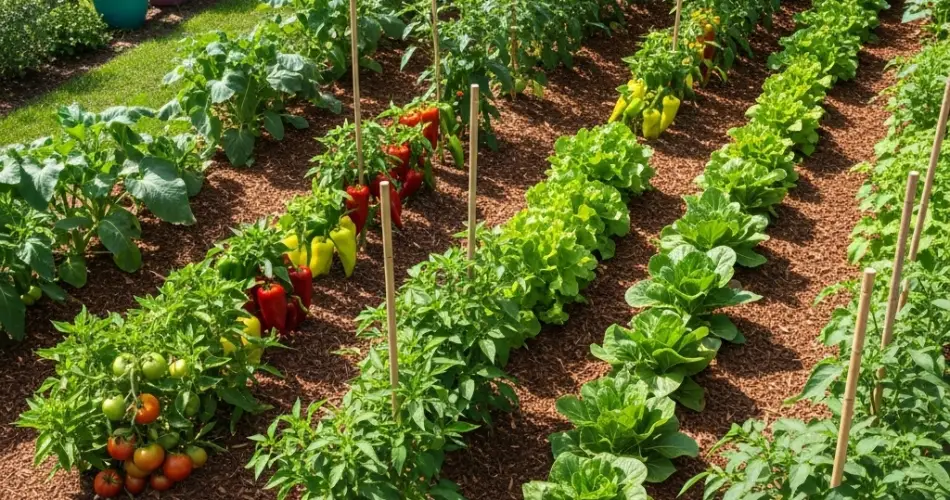Turning your backyard into a vegetable haven is one of the most rewarding ways to enjoy fresh, homegrown produce and connect with nature. Whether you’re working with a spacious yard or a compact patio, growing your own vegetables brings satisfaction, flavor, and health benefits to the table.
Successful gardening, however, begins with good planning. From choosing the right crops and preparing the soil to knowing when to harvest, each step plays a role in creating a vibrant, productive vegetable garden. Here’s a complete guide to planning, planting, and harvesting your own backyard veggie delights.
Step 1: Planning Your Vegetable Garden
Good planning is the foundation of a thriving garden. Start by assessing your space, light conditions, and what vegetables you and your family enjoy eating.
Assess Sunlight:
Most vegetables need at least 6–8 hours of full sun daily. Monitor your backyard and choose the sunniest spots for planting.
Decide What to Grow:
Start with easy-to-grow, high-yield crops like:
-
Tomatoes
-
Lettuce and spinach
-
Carrots and radishes
-
Peppers
-
Zucchini and cucumbers
-
Green beans
Choose vegetables suited to your local climate and growing season. Consult planting calendars or local extension services for timing in your region.
Plan the Layout:
Use raised beds, rows, or container arrangements based on your space. Group plants with similar water and sunlight needs. Companion planting—pairing plants that benefit each other—can also improve productivity and reduce pests.
Gather Materials:
Prepare your tools, compost, seeds or seedlings, labels, and mulch in advance to make the planting process smooth and organized.
Step 2: Preparing the Soil
Healthy soil is essential for robust vegetables. Before planting, test your soil’s texture and pH. Most vegetables prefer a slightly acidic to neutral pH (6.0 to 7.0).
Soil Preparation Tips:
-
Remove weeds, rocks, and debris from the planting area
-
Incorporate organic matter such as compost or aged manure to improve fertility and structure
-
Loosen the soil to about 12 inches deep to allow for strong root growth
-
Level the soil surface for even watering and planting
If working with containers, choose a high-quality potting mix designed for vegetables, and ensure your pots have good drainage.
Step 3: Planting the Right Way
Once your soil is prepped, it’s time to plant. Whether sowing seeds or transplanting seedlings, proper technique ensures a strong start.
Seed Sowing:
-
Follow seed packet instructions for depth and spacing
-
Water gently after sowing
-
Keep soil moist until germination
-
Thin seedlings if they sprout too close together
Transplanting Seedlings:
-
Harden off seedlings by gradually exposing them to outdoor conditions for a week
-
Plant on a cloudy day or in the late afternoon to reduce transplant shock
-
Water thoroughly after planting
Spacing is important—overcrowding limits airflow and increases the risk of disease. Be sure to label your rows or containers so you can track what’s growing where.
Step 4: Caring for Your Growing Garden
With everything in the ground, maintenance becomes the key to a successful harvest.
Watering:
Most vegetables need 1–1.5 inches of water per week, either from rainfall or irrigation. Water early in the morning and at the base of the plants to prevent disease.
Weeding:
Remove weeds regularly to reduce competition for nutrients and water.
Mulching:
Apply mulch like straw, wood chips, or shredded leaves to retain moisture, suppress weeds, and regulate soil temperature.
Fertilizing:
Feed plants with organic fertilizers such as compost tea, fish emulsion, or slow-release pellets based on their growth stage.
Pest and Disease Control:
Check leaves regularly for pests or signs of disease. Use natural deterrents like neem oil, insecticidal soap, or floating row covers when necessary.
Step 5: Harvesting and Enjoying the Fruits of Your Labor
Knowing when and how to harvest is just as important as growing.
Harvest Timing Tips:
-
Leafy greens: Pick outer leaves when they’re young and tender
-
Root crops: Gently loosen soil and pull when roots reach recommended size
-
Tomatoes and peppers: Harvest when fully colored and slightly soft
-
Zucchini: Pick when 6–8 inches long for best flavor
-
Beans: Pick while pods are still tender
Harvest regularly to encourage continued production and prevent overripening.
Final Thoughts
Creating a backyard vegetable garden is a fulfilling journey that yields both nourishment and joy. With thoughtful planning, proper planting, and consistent care, your space can flourish with fresh vegetables all season long.
Whether you’re growing for your family’s table, reducing grocery costs, or simply enjoying the experience of gardening, the rewards are well worth the effort. So roll up your sleeves, grab your garden gloves, and turn your backyard into a delicious oasis of veggie delights.



